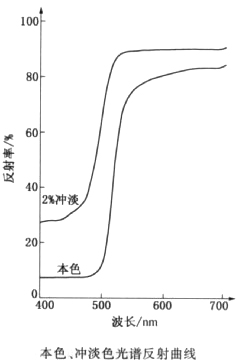Mercuric sulfide, red
Mercuric sulfide, red
CAS: 12225-23-9
Molecular Formula:
Mercuric sulfide, red - Names and Identifiers
| Name | Mercuric sulfide, red |
| Synonyms | P.Y.106 Diaryl Yellow GGR Permanent Yellow GGR Mercuric sulfide, red C.I.Pigment Yellow 106 C.I. Pigment Yellow 106 |
| CAS | 12225-23-9 |
Mercuric sulfide, red - Physico-chemical Properties
| Physical and Chemical Properties | hue or color: green yellow relative density: 1.34 Bulk density/(lb/gal):11.2 average particle size/μm:0.10 particle shape: Rod shape specific surface area/(m2/g):44 pH value/(10% slurry):-6 oil absorption/(g/100g):83-97 hiding power: translucent reflection curve:  |
| Use | The pigment species belongs to the mixed coupling type of biphenylamine yellow. I. Pigment yellow 17 slightly red in the green-light yellow tone, higher color intensity (ink samples at standard depths require only 12% pigment concentration, while C. Et al. I. Pigment yellow 17 Requires a pigment concentration of 25%). The light fastness of the pigment was 0.5 lower than that of C. I. pigment yellow 17. Mainly used in printing ink, thermal stability of 200 C/10min, ink samples resistant to varnish and sterilization, and used for metal decorative paint. Only in recent years to withdraw from the market. |
Mercuric sulfide, red - Introduction
C. I. Pigment Yellow 106, also known as Food Yellow No. 4, is a synthetic organic pigment. It has a bright yellow color and has good light and heat resistance.
C.I. Pigment Yellow 106 is widely used in food, cosmetics and plastics. In food, it is often used to color and color lemon yellow, such as desserts, sweets and drinks. In cosmetics, it is often used in products such as mascara, lipstick and eye shadow to add a bright yellow color. In plastic products, it can be used to color plastic products, providing a wealth of color options.
C.I. Pigment Yellow 106 is generally prepared by chemical synthesis. The most common method is through the dinitration reaction of p-cresol (an aromatic phenolic compound), followed by polycondensation reaction with compounds such as aniline or p-aminophenol, finally producing C.I. Pigment Yellow 106.
Regarding the safety information of C.I. Pigment Yellow 106, according to international food additive regulations and related standards, it is considered safe and will not cause direct harm to human health. However, for some people, there may be allergic reactions or excessive use can cause food discomfort symptoms, so it needs to be used in an appropriate amount and in accordance with relevant regulations and guidelines. In addition, the production and use of the process need to pay attention to prevent it from entering the eyes and skin, to avoid inhalation of dust. Store out of reach of children and pets. If you take it by mistake or accidentally touch it, please seek medical attention or consult a professional.
C.I. Pigment Yellow 106 is widely used in food, cosmetics and plastics. In food, it is often used to color and color lemon yellow, such as desserts, sweets and drinks. In cosmetics, it is often used in products such as mascara, lipstick and eye shadow to add a bright yellow color. In plastic products, it can be used to color plastic products, providing a wealth of color options.
C.I. Pigment Yellow 106 is generally prepared by chemical synthesis. The most common method is through the dinitration reaction of p-cresol (an aromatic phenolic compound), followed by polycondensation reaction with compounds such as aniline or p-aminophenol, finally producing C.I. Pigment Yellow 106.
Regarding the safety information of C.I. Pigment Yellow 106, according to international food additive regulations and related standards, it is considered safe and will not cause direct harm to human health. However, for some people, there may be allergic reactions or excessive use can cause food discomfort symptoms, so it needs to be used in an appropriate amount and in accordance with relevant regulations and guidelines. In addition, the production and use of the process need to pay attention to prevent it from entering the eyes and skin, to avoid inhalation of dust. Store out of reach of children and pets. If you take it by mistake or accidentally touch it, please seek medical attention or consult a professional.
Last Update:2024-04-09 20:49:11